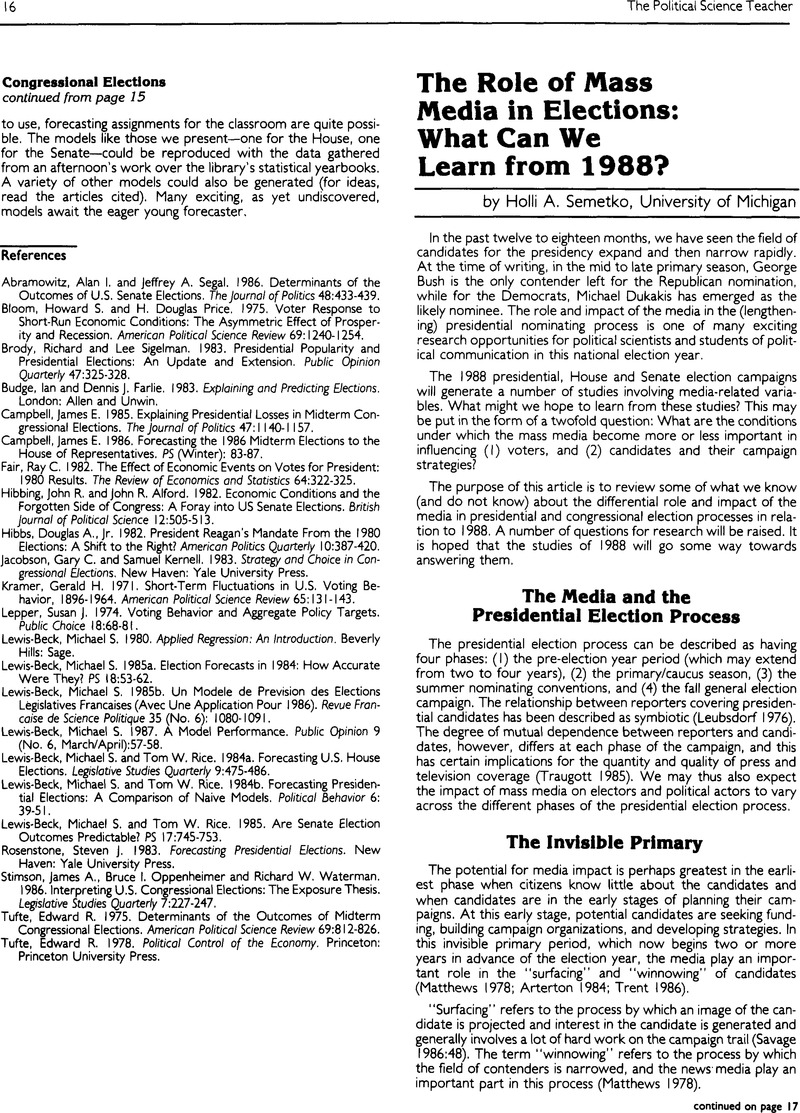Crossref Citations
This article has been cited by the following publications. This list is generated based on data provided by Crossref.
Shelley, Mack C.
and
Hwang, Hwarng-Du
1991.
The Mass Media and Public Opinion Polls in the 1988 Presidential Election.
American Politics Quarterly,
Vol. 19,
Issue. 1,
p.
59.



